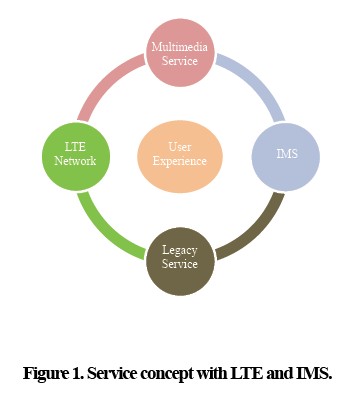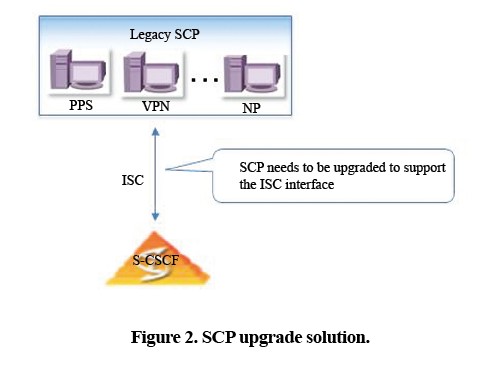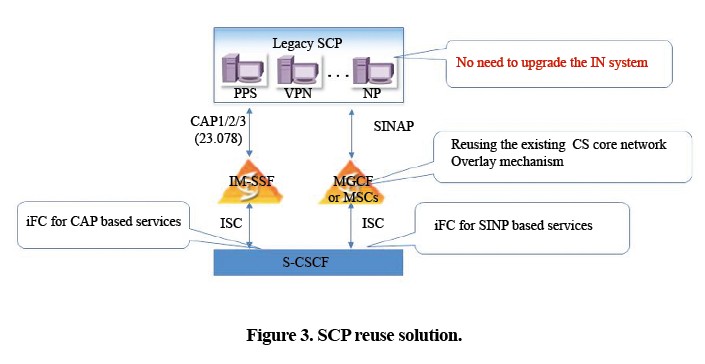Legacy Service Inheritance in VoLTE
Voice over LTE (VoLTE) delivers packet-switched voice and multimedia services over an LTE network. The IR.92 standard for VoLTE, defined by GSMA, uses a subset of IMS functions. Better user experience requires high-quality interactions between multimedia services, LTE transport networks, IMS, and legacy services. Enhancing user experience is a core strategy of operators.

Challenges
When evolving from 2G and 3G to LTE, the same phone numbers are usually retained so that users can enjoy new IMS and LTE multimedia services but continue to have legacy 2G and 3G services such as prepaid, VPN, and personal ring-back. When VoLTE and IMS are introduced into a network, mobile operators need to guarantee that customers can still use legacy services. The main challenges of legacy services in VoLTE are:
● the existing SCP has been in service for several years. It is hard to modify the SCP and use an IP-based ISC interface to interact with the IMS network and provide legacy services for users.
● legacy services are delivered by different SCPs that have different service logics or different custom-made features. Therefore it is difficult to do interoperating testing (IOT) with each SCP.
● operators have invested heavily in legacy SCP platforms, so they don’t want to reinvest any more when introducing IMS and VoLTE. The ideal solution is to reuse the legacy IN system and use a simple data configuration on SCP but do not upgrade software or change service logic or IN interfaces.
Legacy Services in VoLTE
SCP upgrade
To interact with S-CSCF, the existing SCP platform needs to be upgraded to support the ISC interface. S-CSCF triggers legacy services to SCP according to the standard IMS traffic flow. This is the simplest and most standard way that legacy services are inherited.

SCP reuse
SCP reuse involves IM-SSF functionality and an overlay mechanism. The IM-SSF defined in 3GPP TS 23.218 provides IP multimedia service switching, which mediates service requests between IMS legacy service delivery platforms, such as INSCP. When interconnecting the legacy network, the IM-SSF supports standard protocols such as CAMEL, INAP and MAP. Vendor-specific protocols are also supported. From an IMS perspective, IM-SSF is just a SIP application server. IM-SSF acts as an SIP back-to-back user agent (SIP B2BUA) and breaks the call coming from the originating party. It creates a new call leg towards the terminating party. This allows modifications to be made on the session. From a gsmSCF perspective, IM-SSF acts similar to a GSM SSF. To minimize modifications on the network and make full use of the existing infrustructure, an overlay mechanism is also used for legacy services. The existing MGCF or MSCs are used as SSP to trigger legacy services (Fig. 3). This avoids interoperating testing of the IMS system and SCP platform.

In SCP reuse, existing IN services can be reused by IMS users without the need to upgrade the legacy SCP. Only some modifications are made to SCP. Multiple IN services can also be triggered by S-CSCF in one session. This means that multiple iFCs are subscribed in HSS.
Conclusion
Inheriting legacy services is an important requirement when introducing VoLTE into the network. Operators need to take into consideration investment, impact on network operation and end users, and services to be inherited. An ideal legacy service inheritance solution should have minimal impact on existing network and users, and it should protect operator investment. ZTE supports all the abovementioned solutions for legacy service inheritance in VoLTE. The solutiuon based on IMS-SSF has been successfully deployed by CSL, a leading mobile operator in Hong Kong.